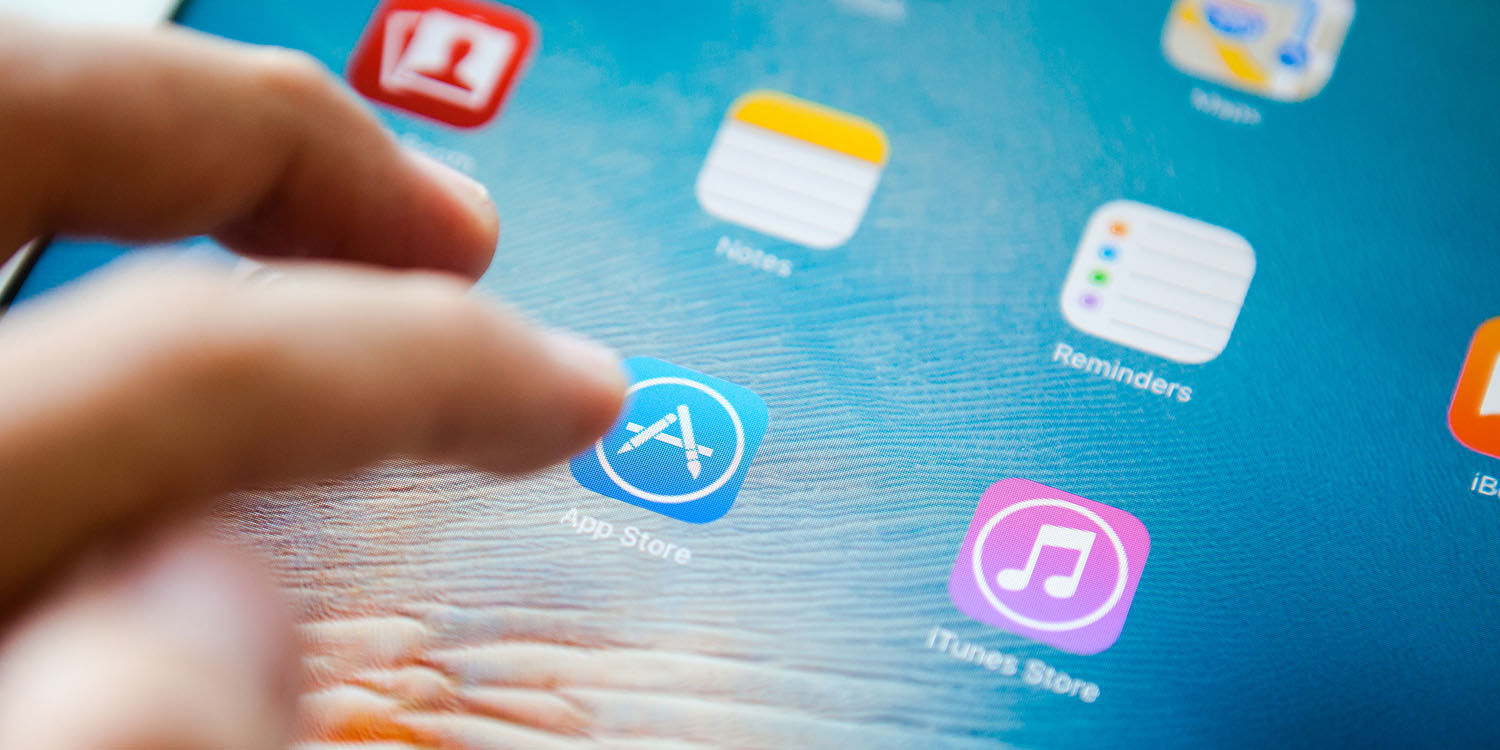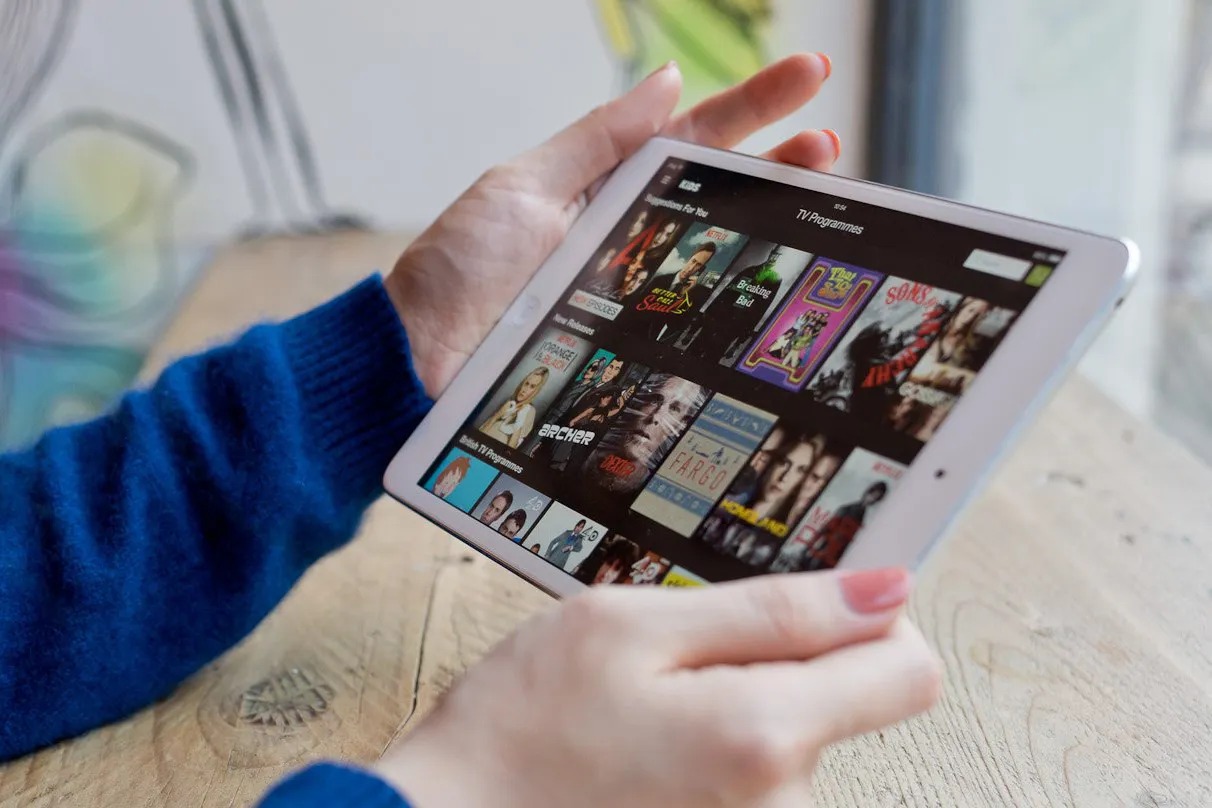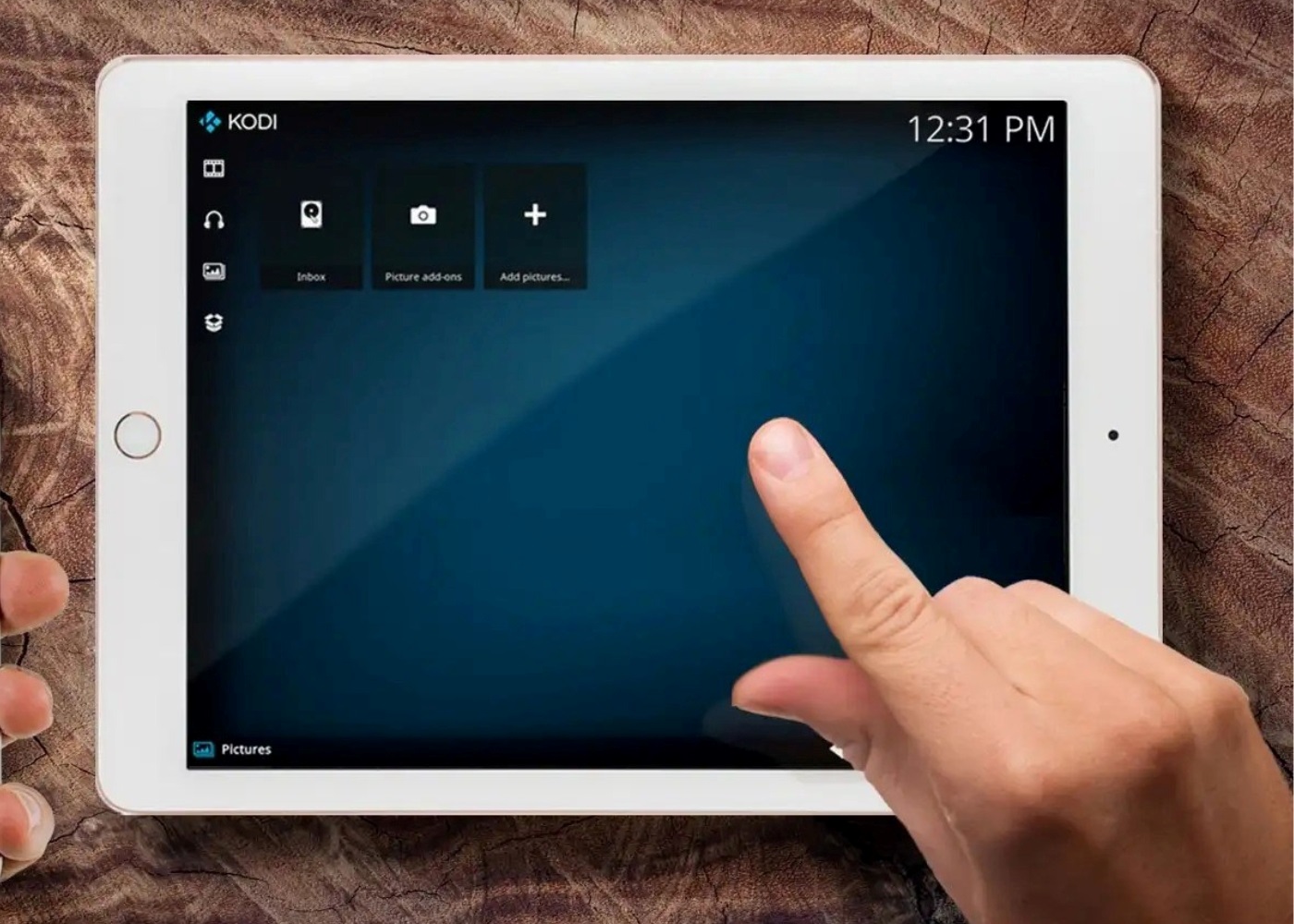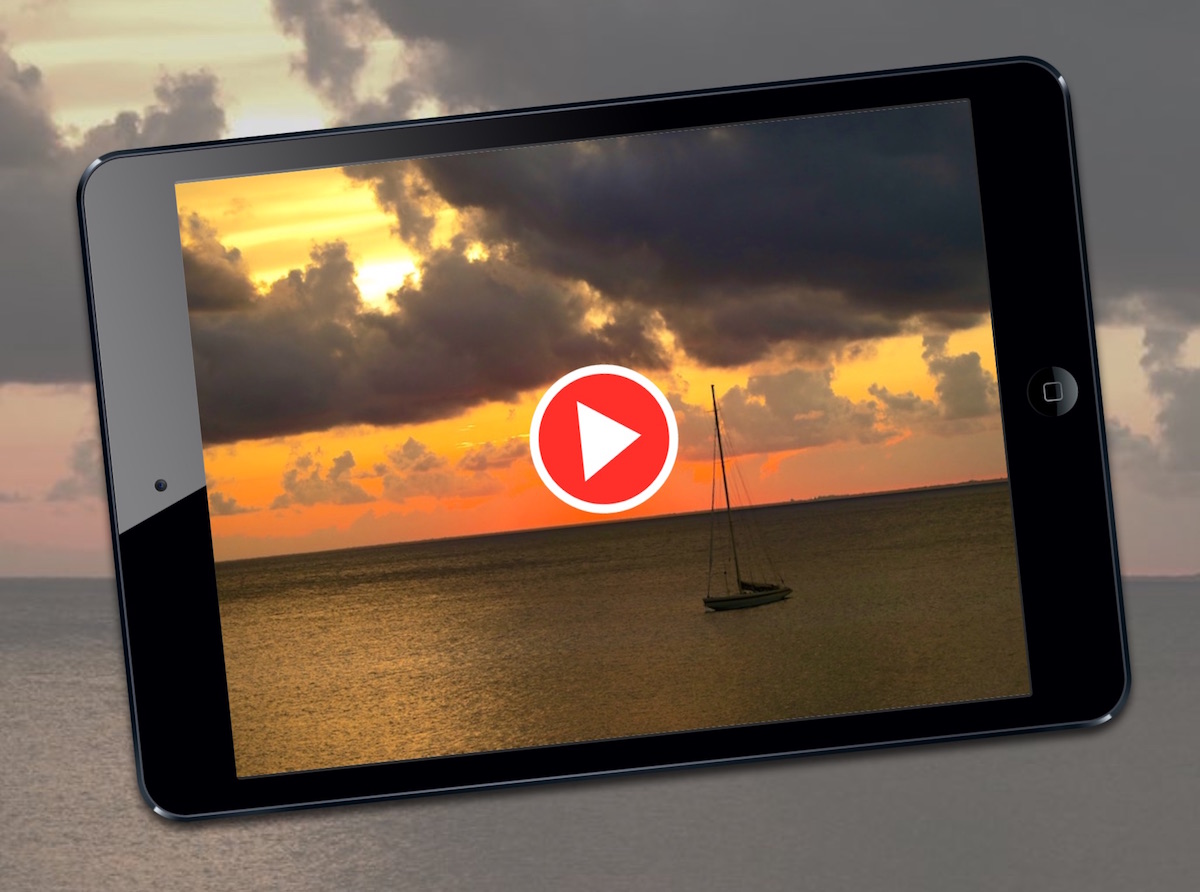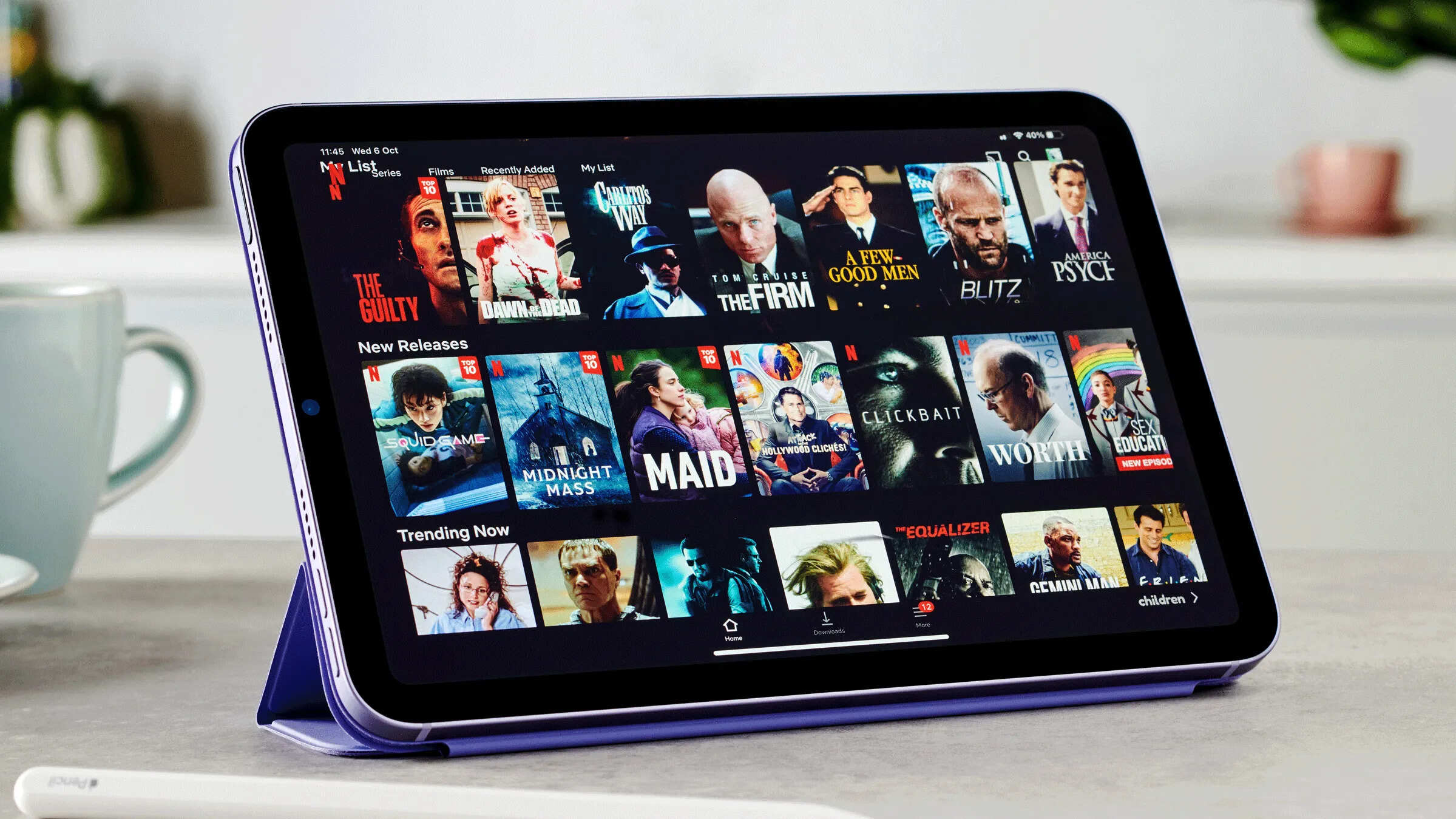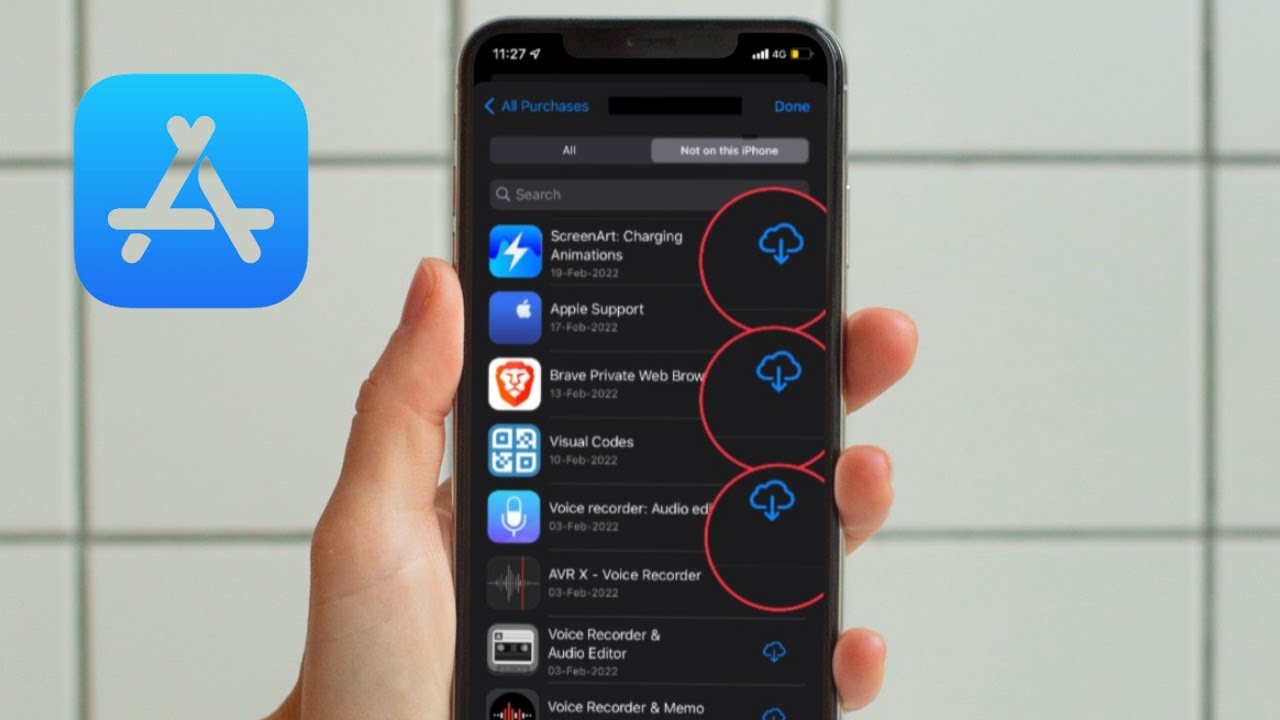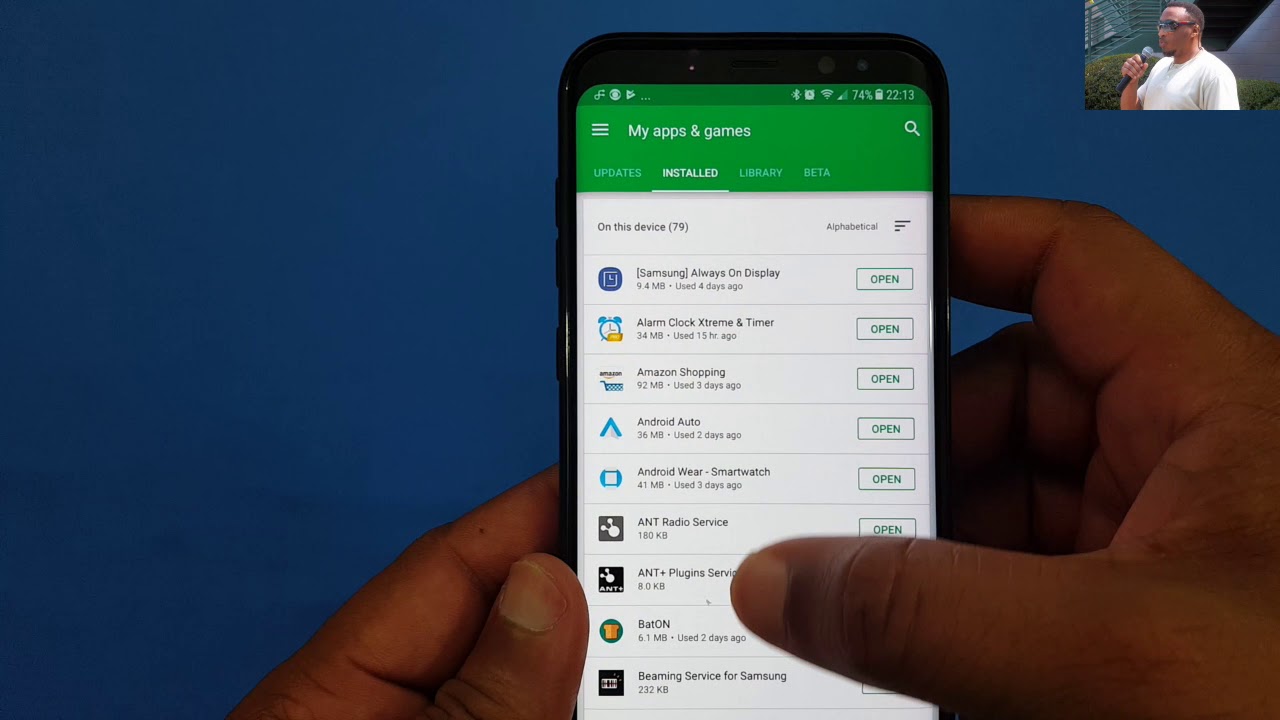Introduction
Welcome to the world of iPad apps! The App Store is a treasure trove of exciting and useful applications designed specifically for your iPad. Whether you’re looking to play games, boost productivity, or explore new creative avenues, the App Store has something for everyone. In this guide, we will walk you through the process of downloading and managing apps from the App Store on your iPad.
With the App Store, you can discover and install a wide range of apps that cater to your interests and needs. From social media platforms and entertainment apps to educational tools and productivity enhancers, the options are endless. Simply tap your way through the App Store to unlock a world of possibilities.
Getting started with the App Store is quick and easy. In just a few simple steps, you’ll be able to access a vast collection of apps that will enhance your iPad experience. Whether you’re a seasoned iPad user or a new adopter, this guide will help you navigate the App Store with confidence.
Throughout this guide, we’ll cover various aspects of using the App Store, including signing in to your Apple ID, browsing and searching for apps, downloading free and paid apps, managing app updates, and more. We’ll also provide troubleshooting tips to help you overcome any challenges you may encounter along the way.
So, if you’re ready to uncover the full potential of your iPad and explore the expansive world of apps, let’s dive in and get started with downloading the App Store on your iPad!
Check iOS Software Version
Before you start downloading apps from the App Store on your iPad, it’s important to ensure that your device is running the latest version of iOS. Updating to the latest software version not only provides you with access to the latest features and improvements but also ensures compatibility with the apps available on the App Store.
To check the iOS software version on your iPad, follow these simple steps:
- Open the “Settings” app on your iPad. This can be found on your home screen.
- Scroll down and tap on “General”.
- In the General settings, tap on “Software Update”.
- Your iPad will now check for any available updates. If an update is available, you will see a notification prompting you to download and install it.
- If an update is available, tap on “Download and Install” to begin the update process. Ensure that your iPad is connected to Wi-Fi and has sufficient battery life or is connected to a power source.
- Follow the on-screen instructions to complete the update. Your iPad will restart after the update is installed.
Once your iPad is running the latest version of iOS, you’re ready to dive into the world of apps available on the App Store. Keeping your software up to date not only ensures a smooth app downloading experience but also helps in maintaining the security and performance of your device.
It’s worth mentioning that your iPad may have automatic updates enabled. In this case, the device will automatically download and install updates when connected to Wi-Fi and charging. To check if automatic updates are enabled, go to Settings > General > Software Update, and ensure that “Download iOS updates” or “Download and Install” is toggled on.
Now that you’ve ensured your iPad is running the latest iOS software version, let’s move on to the next step: connecting to Wi-Fi.
Connect to Wi-Fi
In order to download apps from the App Store on your iPad, you’ll need to connect to a Wi-Fi network. Wi-Fi provides a fast and stable internet connection, ensuring smooth app downloads and updates. Here’s how you can connect your iPad to a Wi-Fi network:
- Unlock your iPad and go to the home screen.
- Tap on the “Settings” app, which looks like a gear icon.
- In the Settings menu, tap on “Wi-Fi”.
- Ensure that the Wi-Fi switch is toggled on. If it’s off, simply tap on the switch to turn it on.
- A list of available Wi-Fi networks will appear. Tap on the network you want to connect to.
- If the network is secured with a password, enter the password when prompted. Make sure to enter the correct password to successfully connect.
- Your iPad will now attempt to connect to the selected Wi-Fi network. Once connected, you will see a checkmark next to the network name in the Wi-Fi settings.
Once you’re connected to Wi-Fi, you’re ready to start exploring the App Store and downloading your favorite apps. Keep in mind that some apps may require a strong and stable internet connection, especially those that involve streaming or downloading large files. Therefore, it’s recommended to connect to a reliable Wi-Fi network whenever possible to ensure a seamless app downloading experience.
If you’re unable to find a Wi-Fi network to connect to, or if you’re experiencing difficulties connecting to a network, there are a few troubleshooting steps you can try:
- Make sure that you’re in range of the Wi-Fi network you’re trying to connect to.
- Restart your iPad and try again.
- If the Wi-Fi network is password-protected, double-check that you’ve entered the correct password.
- Try forgetting the Wi-Fi network by going to Settings > Wi-Fi, tapping on the network name, and selecting “Forget This Network”. Then, rejoin the network by selecting it from the available networks list and entering the password.
- If the issue persists, try resetting your network settings by going to Settings > General > Reset > Reset Network Settings. Keep in mind that this will remove any saved Wi-Fi passwords.
By following these steps, you’ll be able to connect your iPad to a Wi-Fi network, paving the way for seamless app downloads and updates from the App Store.
Open the App Store
Once you’ve connected to a Wi-Fi network, it’s time to open the App Store on your iPad. The App Store is the central hub where you can browse and download a vast array of apps tailored for your device. Follow these steps to access the App Store:
- Unlock your iPad and go to the home screen.
- Locate the App Store icon, which resembles a blue icon with a white letter “A” inside a white circle. It is usually found on one of the home screens, or you can swipe down from the center of the screen and type “App Store” in the search bar at the top.
- Tap on the App Store icon to open it.
Once you’ve opened the App Store, you will be greeted with the featured and recommended apps, as well as various app categories and sections. The App Store’s interface is designed to help you discover new and exciting apps, making it easier for you to explore different genres and find apps that match your interests.
If you have a specific app in mind that you want to download, you can use the search function provided by the App Store. Simply tap on the search icon, usually denoted by a magnifying glass, and enter the name of the app or relevant keywords. The search results will display a list of matching apps, allowing you to select the one you want.
Additionally, the App Store offers a wide range of curated collections, including “Top Charts,” “Featured,” “New and Noteworthy,” and more. These collections showcase popular and trending apps, helping you discover hidden gems and must-have apps in various categories.
Once you’ve located the app you want to download, proceed to the next section to learn how to sign in to your Apple ID and start downloading apps from the App Store.
Sign In to Your Apple ID
In order to download and install apps from the App Store, you’ll need to sign in to your Apple ID. Your Apple ID is the account that you use to access various Apple services, including the App Store, iCloud, and more. Here’s how you can sign in to your Apple ID on your iPad:
- Open the App Store on your iPad by tapping on the App Store icon on the home screen.
- In the App Store, locate the “Sign In” button at the top right corner and tap on it.
- If you already have an Apple ID, enter your email and password in the respective fields. Then, tap on the “Sign In” button.
- If you don’t have an Apple ID, tap on the “Create New Apple ID” option and follow the on-screen instructions to create a new account.
- If you’ve forgotten your Apple ID password, tap on the “Forgot Password or don’t have an Apple ID?” option and follow the prompts to reset your password or retrieve your Apple ID.
Once you’ve successfully signed in to your Apple ID, you’ll be able to download and install apps from the App Store. It’s important to note that some apps may require you to provide additional information, such as payment details or verification through Touch ID or Face ID, depending on your iPad model.
Signing in to your Apple ID not only allows you to download apps but also enables you to sync your app purchases across multiple devices, access your app library, manage subscriptions and in-app purchases, and receive personalized recommendations based on your preferences and previous app downloads.
If you have multiple Apple IDs or you’re using a family-sharing setup, you may need to switch between accounts. To do this, go to the App Store, tap on your profile picture or initials at the top right corner, and select the account you want to use from the drop-down menu.
Now that you’re signed in to your Apple ID, you’re ready to start browsing and downloading apps from the App Store. In the next section, we’ll walk you through how to browse and search for apps to find the ones that suit your needs.
Browse and Search for Apps
Now that you’re signed in to your Apple ID, you can start exploring the vast collection of apps available on the App Store. There are two main methods to discover apps: browsing and searching. Here’s a step-by-step guide on how to browse and search for apps on your iPad:
Browsing Apps:
- Open the App Store on your iPad by tapping on the App Store icon.
- On the App Store’s home screen, you’ll find several sections that showcase featured and recommended apps. Scroll through these sections to find apps that catch your attention.
- You can also explore different app categories by tapping on the “Categories” tab at the bottom of the screen. This will present you with a list of categories such as Games, Productivity, Education, Entertainment, and more.
- Tap on a category that interests you to explore the apps within that category.
- Within each category, you can further refine your search by selecting subcategories or using the “Filters” option. This will help you narrow down your options and find apps that match your specific preferences.
- As you browse through the apps, you can view their descriptions, screenshots, reviews, and ratings to get a better understanding of what each app offers.
- If you find an app you’d like to download, tap on the “Get” or price button to initiate the download process.
Searching for Apps:
- Open the App Store on your iPad.
- To search for a specific app, tap on the search icon, usually denoted by a magnifying glass, located at the bottom right corner of the screen.
- Enter the name of the app or relevant keywords in the search bar at the top of the screen.
- The search results will display a list of apps that match your search query. Tap on an app to view more details, or scroll through the list to find the desired app.
- Once you’ve found the app you want to download, tap on the “Get” or price button to begin the download process.
By browsing and searching for apps, you can uncover a world of possibilities on the App Store. Whether you’re looking for a specific app or exploring different categories, the App Store offers a wide variety of options to cater to your interests and needs.
In the next section, we’ll explore how to download free apps from the App Store and acquire paid apps if needed.
Download Free Apps
One of the best things about the App Store is that it offers a plethora of free apps for you to download and enjoy on your iPad. Whether it’s a game, a productivity tool, or a social media platform, you can find an array of free apps that cater to your interests. Here’s how you can download free apps from the App Store:
- Open the App Store on your iPad.
- Using the browsing or searching methods mentioned earlier, find the free app you want to download.
- Once you’ve found the app, tap on the “Get” button located next to the app’s name or price.
- The “Get” button will change to an “Install” button. Tap on it to initiate the downloading process.
- If prompted, enter your Apple ID password or use Touch ID/Face ID to confirm the download.
- The app will now begin to download and install on your iPad. You can monitor the progress on the app’s icon, which will appear on your home screen or in your App Library.
- Once the download is complete, you can tap on the app’s icon to launch and start using it.
Downloading free apps is a great way to explore various applications and discover new favorites without any cost. These apps can provide entertainment, productivity, and utility features, enriching your iPad experience.
Remember that while free apps are typically available for immediate download, some may contain in-app purchases or offer additional features through premium versions. You can explore these options within the app itself, should you decide to enhance your experience or access exclusive features.
Now that you’ve learned how to download free apps, let’s move on to the next section where we’ll discuss how to purchase and download paid apps from the App Store.
Purchase Paid Apps
While the App Store offers a wide range of free apps, there are also paid apps that provide additional features, advanced functionality, or ad-free experiences. If you come across a paid app that you’re interested in, you can easily purchase and download it from the App Store. Here’s how:
- Open the App Store on your iPad.
- Using the browsing or searching methods mentioned earlier, find the paid app you want to purchase.
- Tap on the app’s price to initiate the purchase process. You may need to confirm your Apple ID password or use Touch ID/Face ID to authorize the purchase.
- A dialog box will appear, asking you to confirm the purchase. Review the app’s price, read any additional information, and then tap on “Buy” or “Purchase” to complete the transaction.
- If you haven’t set up payment options for your Apple ID, you’ll be prompted to enter your payment information, such as credit card details, billing address, etc. Follow the on-screen instructions to provide the required information.
- Once the purchase is successful, the app will begin to download and install on your iPad. You can track the progress on the app’s icon.
- Once the download is complete, you can tap on the app’s icon to launch and start using the paid app.
When purchasing paid apps, it’s important to make sure that you’re using your Apple ID and making the purchase from a trusted source. The App Store provides a secure platform for purchasing apps, ensuring the safety and authenticity of the apps you download.
Some paid apps may offer free trials or lite versions for you to try before making a purchase. This allows you to test the app’s features and functionality before committing to the full version.
Remember that purchases made on the App Store are tied to your Apple ID, so you can access and download them on any other iOS or iPadOS devices linked to the same Apple ID.
Now that you know how to purchase and download paid apps, you can explore a broader range of apps and take advantage of their premium features and capabilities.
Download Updates
As app developers continually strive to improve their offerings, they release updates to enhance stability, add new features, and address any bugs or security vulnerabilities. It’s important to keep your apps up to date to ensure that you’re benefiting from the latest improvements. Here’s how you can download updates for your apps from the App Store:
- Open the App Store on your iPad.
- Tap on your profile picture or initials at the top right corner of the screen to access your Account page.
- Scroll down and find the “Available Updates” section. This section will display a list of apps that have updates available.
- If you see the “Update” button next to an app, it means an update is available for that specific app. Tap on “Update” to start the update process. Alternatively, you can tap on “Update All” at the top of the Available Updates section to update all the apps at once.
- If prompted, enter your Apple ID password or use Touch ID/Face ID to authorize the updates.
- The App Store will now download and install the updates for the selected apps. You can monitor the progress of the updates through the progress bar next to each app’s name.
- Once the updates are installed, you can launch the updated apps and enjoy the latest features and improvements that the developers have implemented.
By regularly checking for updates and keeping your apps up to date, you ensure that you’re getting the best experience and taking advantage of the latest enhancements and bug fixes. Updates also help maintain the security of your apps and protect your personal information.
Automatic updates can be enabled to streamline the update process. To do this, go to Settings > App Store > App Updates, and toggle on the “App Updates” option. With this setting enabled, your apps will be automatically updated in the background whenever updates become available.
Now that you know how to download updates for your apps, you can stay up to date with the latest improvements and enjoy an optimal app experience on your iPad.
Manage App Downloads
Managing your app downloads is essential for organizing your apps, pausing or resuming downloads, and prioritizing certain downloads over others. Here are some ways you can manage your app downloads on the App Store:
- View and Monitor Downloads: When you download or update an app from the App Store, you can monitor the progress of the download or update by looking at the progress bar displayed next to the app’s name. You can find this progress bar on the App Store’s home screen or on your device’s home screen. This allows you to keep track of the download status.
- Pause or Resume Downloads: If you’re experiencing slow internet connectivity or want to prioritize other downloads, you can manually pause an ongoing app download. To do this, simply tap on the app icon in the download queue, and the download will be paused. You can then resume the download at a later time by tapping the same icon.
- Manage App Updates: The App Store provides the option to automatically update all your apps. However, if you want more control over your app updates, you can choose to update apps manually. To do this, go to Settings > App Store > App Updates, and toggle off the “App Updates” option. With manual updates enabled, you can choose which apps to update and when to update them.
- Arrange Apps on Home Screen: After downloading or updating apps, you may want to organize them on your iPad’s home screen. Simply tap and hold an app icon until it starts to jiggle, then drag and drop it to a new location on the screen. You can also create app folders by dragging one app icon on top of another. This helps you keep your apps organized and easily accessible.
- Remove Unused Apps: Over time, you may accumulate apps that you no longer use. To free up storage space and declutter your device, you can remove unused apps. Press and hold an app icon until it starts to jiggle, then tap on the “X” symbol that appears on the top left corner of the icon. Confirm the removal by tapping the “Delete” option. Alternatively, you can go to Settings > General > iPad Storage and select an app from the list to delete it.
By managing your app downloads, you can stay organized, prioritize downloads, and keep your iPad’s home screen clutter-free. Regularly reviewing your installed apps and removing unused ones also helps optimize storage space on your device.
Now that you’re aware of how to manage your app downloads, you can stay in control of your app installations and keep your iPad organized.
Delete Unwanted Apps
Over time, you may find that some apps on your iPad are no longer useful or needed. Deleting unwanted apps not only helps declutter your device but also frees up storage space for other apps and files. Here’s how you can easily delete unwanted apps from your iPad:
- Locate the app you want to delete on your iPad’s home screen.
- Long-press (tap and hold) the app icon until it starts to jiggle, and an “X” symbol appears on the top left corner of the app icon.
- Tap the “X” symbol on the app you want to delete.
- A confirmation message will appear, asking if you want to delete the app. Read the message carefully, as deleting the app will also remove all its data and documents from your iPad.
- If you are certain you want to delete the app, tap on “Delete” to confirm.
Alternatively, you can manage and delete apps through the iPad’s Settings:
- Go to Settings on your iPad.
- Scroll down and tap on “General”.
- Tap on “iPad Storage”.
- A list of apps will appear, showing the amount of storage they consume. Tap on the app you want to delete.
- On the next screen, tap on “Delete App”.
- Confirm the deletion by tapping “Delete App” in the pop-up message.
Deleting unwanted apps is a simple and effective way to keep your iPad organized and ensure that you have ample space for the apps that you use regularly. It’s important to periodically assess your installed apps and remove the ones that are no longer relevant to your needs or that you no longer use.
Keep in mind that some apps may be pre-installed by Apple and cannot be deleted. For these apps, the “X” symbol will not appear when you try to delete them. However, you can hide these apps by moving them to a folder or a different screen, allowing you to declutter your home screen.
By deleting unwanted apps, you can optimize the storage space on your iPad, improve device performance, and create a more streamlined and personalized experience.
Now that you know how to delete unwanted apps, you can easily manage your app collection and keep your iPad clutter-free.
Troubleshooting Tips
While using the App Store on your iPad is generally a smooth and seamless experience, you may encounter occasional issues or glitches. Luckily, most issues can be resolved with a few simple troubleshooting steps. Here are some troubleshooting tips to help you overcome common App Store problems:
- Check Your Internet Connection: Ensure that you have a stable internet connection. Connect to a reliable Wi-Fi network or enable cellular data if you’re not connected to Wi-Fi. Poor internet connectivity can cause issues with app downloads and updates.
- Close and Reopen the App Store: If you’re experiencing difficulties with the App Store, try closing the app completely and reopening it. This can help resolve minor glitches or temporary issues.
- Restart Your iPad: A simple restart can solve many software-related issues. Press and hold the power button until the “Slide to Power Off” appears. Slide it to turn off your iPad, then press and hold the power button again to turn it back on.
- Update Your iPad’s Software: Ensure that your iPad is running the latest version of iOS. Go to Settings > General > Software Update to check for and install any available updates. Software updates often include bug fixes and improvements for App Store functionality.
- Sign Out and Sign Back into Your Apple ID: If you’re having trouble with app downloads or purchases, signing out and then signing back in to your Apple ID can help refresh the connection. Go to Settings > iTunes & App Store, tap on your Apple ID, and choose “Sign Out”. Then, sign back in with your Apple ID credentials.
- Clear App Store Cache: Clearing the cache of the App Store can help resolve issues with slow loading or incorrect information. Go to Settings > iTunes & App Store, tap on your Apple ID, and choose “Sign Out”. Then, sign back in and try accessing the App Store again.
- Reset All Settings: If you’re still experiencing persistent issues, you can try resetting all settings on your iPad. Note that this will not delete any of your data but will reset various settings to their default values. Go to Settings > General > Reset > Reset All Settings and follow the on-screen instructions.
- Contact Apple Support: If none of the above troubleshooting steps resolve your issues, reach out to Apple Support for further assistance. They have a wealth of knowledge and resources to help you resolve any App Store-related problems.
Remember, troubleshooting steps may vary depending on the specific issue you’re facing, and it’s always a good idea to check official Apple support resources for the most up-to-date information.
By following these troubleshooting tips, you can overcome common App Store issues and ensure a smooth experience while downloading, updating, and managing your apps on your iPad.
Conclusion
Congratulations! You’ve now learned how to comfortably navigate the App Store on your iPad, opening up a world of possibilities. From checking your iOS software version and connecting to a Wi-Fi network to browsing, searching for, and downloading apps, you have the tools to enhance your iPad experience.
We explored the process of signing in to your Apple ID, allowing you to access your purchased apps and sync your app library across devices. Whether you’re downloading free apps or purchasing paid apps, you now have the knowledge needed to make informed choices and enjoy a wide range of apps tailored to your interests and needs.
We covered the importance of keeping your apps up to date by downloading updates. This ensures that you benefit from the latest improvements, bug fixes, and security enhancements released by app developers.
Additionally, we delved into managing your app downloads, arranging your apps on the home screen, and removing unwanted apps to keep your iPad organized and optimize storage space. And finally, we provided troubleshooting tips to help you overcome common App Store issues and ensure a seamless experience.
Remember, the App Store is an ever-changing landscape, with new apps being released regularly. So, keep exploring, trying out different apps, and discovering ones that truly enhance your iPad’s capabilities.
Now that you’re equipped with the knowledge and skills to utilize the App Store effectively, go ahead and dive into the vast collection of apps available. Let these apps help you stay productive, entertained, and connected on your iPad.
Enjoy your app-filled journey with your iPad, and happy downloading!







